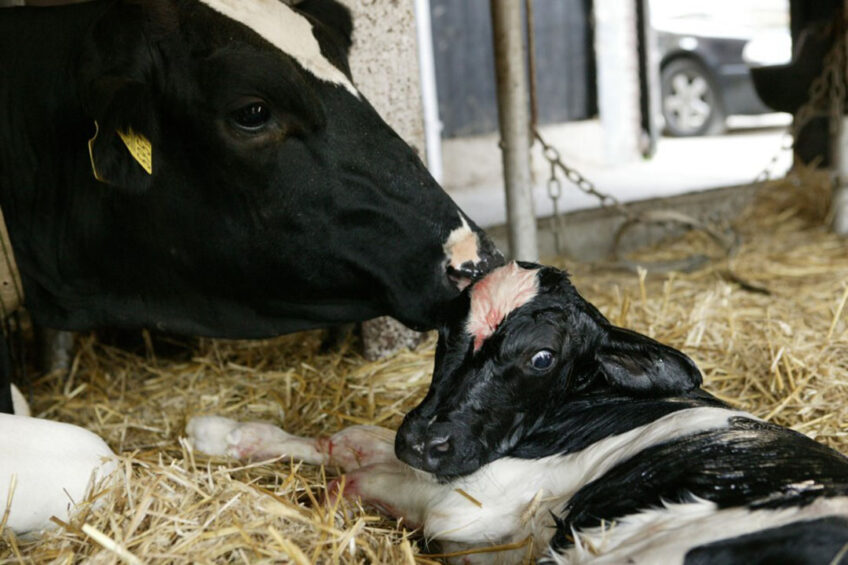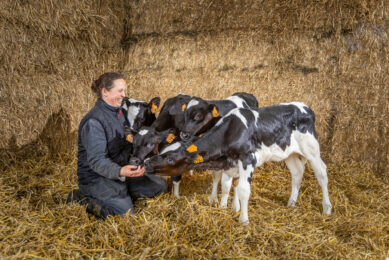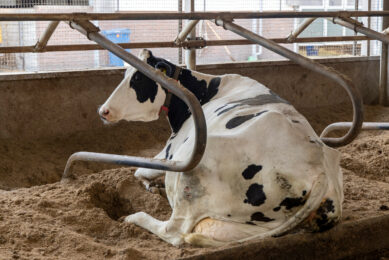New Zealand: Views on prolonged dairy cow-calf contact

Separation of the cow and calf shortly after birth is a common practice on commercial dairy farms around the world, but there are emerging concerns about this practice among citizens and other stakeholders. In a recent survey, New Zealand farmers give their opinion of the cow-calf system.
Few commercial dairy farms provide extended cow-calf contact, and there is little understanding of how dairy farmers view this practice. In the survey, a group of researchers from AgResearch Ltd. and DairyNZ Ltd. examined the views of New Zealand dairy farmers toward providing cow-calf contact, particularly the barriers to adopting such a system in a seasonal-calving pasture-based dairy system.
Conventional farmers identified 3 key themes as reasons influencing decision-making around the provision of cow-calf contact, including animal welfare, labour, and changes to the current farm system.
Animal welfare concerns
Poorer animal welfare was a substantial concern of the conventional farmers, with around half of the participants indicating they felt they were doing what was best for cows by separating the cow and calf; they lacked confidence that cows would care for their calves well, particularly in the early period after birth, so early separation offered more certainty that calves’ needs were being met. Concerns on animal welfare and health from conventional farmers centred around the topics of colostrum and shelter for calves, bonding and stress of separation, and mastitis in cows.
Most conventional farmers felt that keeping calves on cows would create more problems, particularly stress for the cows. For example, one participant stated, “Once they get that bond, it is hard to keep the cows in the paddock. I think the cow is under stress for longer.”
Matthias Placzek, a researcher at the Germany Johann Heinrich von Thünen Institute mentioned that there is a lack of scientific surveys that explore public opinion about how much stress is tolerable in animals that have been allowed to live in a more natural way. In his research, he also emphasised the need for incentives for farmers practising cow-calf systems.
A specific area of concern for many conventional farmers was the increased chance of mastitis and damage to cow udder health in cow-calf contact systems. However, in her research, Margret Wenker, a postdoctoral researcher from the Institute for Animal Welfare and Animal Husbandry, Friedrich-Loeffler-Institute found out that health is not a reason to prevent cow-calf contact. She stated: “Animal welfare is not just a matter of health but also of being able to exhibit your natural behaviour. In the past, animals always had to adapt to the system. If we want livestock farming with respect for the animals, we should be prepared to adapt the system more to suit the animal.”
Effect on labour and system changes
Over 3 quarters of conventional farmers felt that cow-calf contact systems would require considerably more labour and effort or would make farm management more complicated. One farmer stated: “If it is going to take twice as long as what you are already doing, then there has got to be some pretty decent benefits.”
However, little empirical work has investigated the labour costs associated with conventional rearing versus cow-calf contact systems. Cow-calf contact systems may involve a re-distribution of labour, where the time saved on calf rearing is re-invested in other tasks.
Conventional farmers felt that cow-calf contact systems would require significant change, particularly around infrastructure and herd sizes. This was described as including more fencing, creating smaller and calf-proof paddocks for the new cows and calves each day, as well as more housing for calving and calves.
Opinion of farmers practising cow-calf systems
Cow-calf contact farmers that previously reared calves conventionally were motivated by a range of reasons, including benefits to the animals, ease of the system, public perception and consumer demand, and personal reasons such as ethical beliefs. Some participants referred to the cow-calf system as ‘an easy system’ and saves labour because “you don’t have any extra staff members to feed calves”.
However, the cow-calf contact farmers recognised that adjustments to infrastructure are needed with fencing being a necessity. On the other hand, cow-calf farmers felt that public perception should be a motivating factor for farmers to consider contact systems.
The researchers concluded that the survey with conventional and cow-calf contact dairy farmers revealed diverse views on the practice of providing extended cow-calf contact in New Zealand, especially around animal welfare, labour, and system-level practices. They recommended it would be valuable to conduct more in-depth interviews with farmers who reported experiences with both early separation and cow-calf contact systems. In addition, as highlighted by Wenker, the following could be valuable points to consider before adopting a cow-calf contact system:
- Identify suitable cow-calf housing systems including the necessary managerial changes.
- Understand the effects of various types of cow-calf systems on the animals’ affective states.
- Evaluate the optimal duration of daily cow-calf contact and the minimum calf age to initiate weaning and separation.
- Investigate the public acceptability of partial contact as an alternative to other cow-calf systems.
Join 13,000+ subscribers
Subscribe to our newsletter to stay updated about all the need-to-know content in the dairy sector, two times a week.










